Before Karen and I dove deep into the sailing life, we’d frequently jump in the car and take to the road. Our adventures took us to stunning vistas in California’s Sierra Nevada, the Pacific Northwest, and all throughout the Northeast of the U.S. As beautiful as these excursions were, I’d find myself yearning to eventually find a watery overlook – sea cliffs, a lake, even just a mountain stream. There is something mystifying and transformative about the water. The sound it makes over pebbles or beach stones has the power to settle the most anxious mind. Sitting at the ocean’s edge, the water serves as a portal to another world; floating across the sea, there is nothing separating you from experiencing an entirely different culture and geography – whether you go there or it comes to you. On a road trip, I love these context switches.
Similarly, as much as we cherish our adventures at sea, full-time life onboard can at times feel a bit monochromatic. So, every once in awhile, we park the boat and head inland. With the long, skinny geography of Portugal, it is hard to go too far away from the sea, but still there are a lot of fantastic sites to visit.
Our first challenge was finding a car to hire. August in Europe can make matters of travel hard enough, and a layer of Covid restrictions, which both shortened staff hours and increased domestic travel, only made it harder. I ended up huffing it on foot to a small car rental agency outside of Cascais. They had a few cars still available and seemed delighted to serve a foreign traveller.
Karen was an ambitious tech manager in her previous life, and she put her diligent planning skills to practical use once again as she mapped out a route for us to hit some of the scenic destinations of northern Portugal. The first and most immediately obvious on the hit parade as you pull out of Lisbon was Cabo da Raco. Marking the most westerly point of continental Europe, this cape stands tall above the Atlantic sea. On this clear blue day, the challenge of our next leg on Sea Rose was not lost on Karen and I as we looked north following a coastline of broken rock and cliffs all the way to the horizon. Yet, the seas were uncharacteristically calm and I wondered if we were missing out on one of the few rare Atlantic Portugal weather windows.

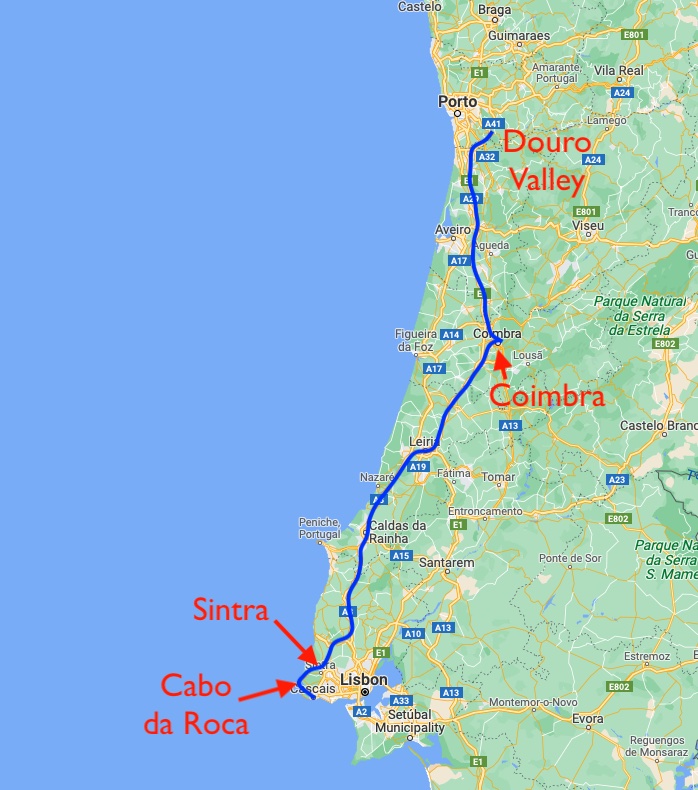
Pushing north and inland but still within sight of Lisbon in the hazy distance, we found ourselves in the village of Sintra, nestled in the wooded coastal mountains. Feeling more like the charm of a Swiss alps village, the streets and sidewalks were teeming with visitors, and gift shop proprietors were aglow with the trajectory of economic recovery from Covid. We seem to have a knack for finding cafe tables on sloping sidewalks, and Sintra was no exception with all the flat tables already occupied. Once you get acclimated, it is really quite simple – you just never take your hand off your wine glass! Even more entertaining, not five minutes after we were seated, all the outdoor tables on the sloping street were occupied. Sometimes, like leading a horse to water, people just need a little encouragement!
Since the 1100’s, Sintra has had a decorated history sprinkled with royal palaces, villas and monasteries. Across the street, we had plenty of time to examine the curiously cone shaped profile of the National Palace of Sintra as we fended off gravity at the cafe. Surprisingly, after we got chatting with our friendly waitress, we learned she grew up here but had never visited this national palace. In a playful spite to aggravate our European dining counterparts, we not only gave her a tip, but a healthy bit more with the stated hope that she one day soon visit the palace. Then again, as any parent knows, gifting money with a wish on how it will be spent is a dicey proposition.

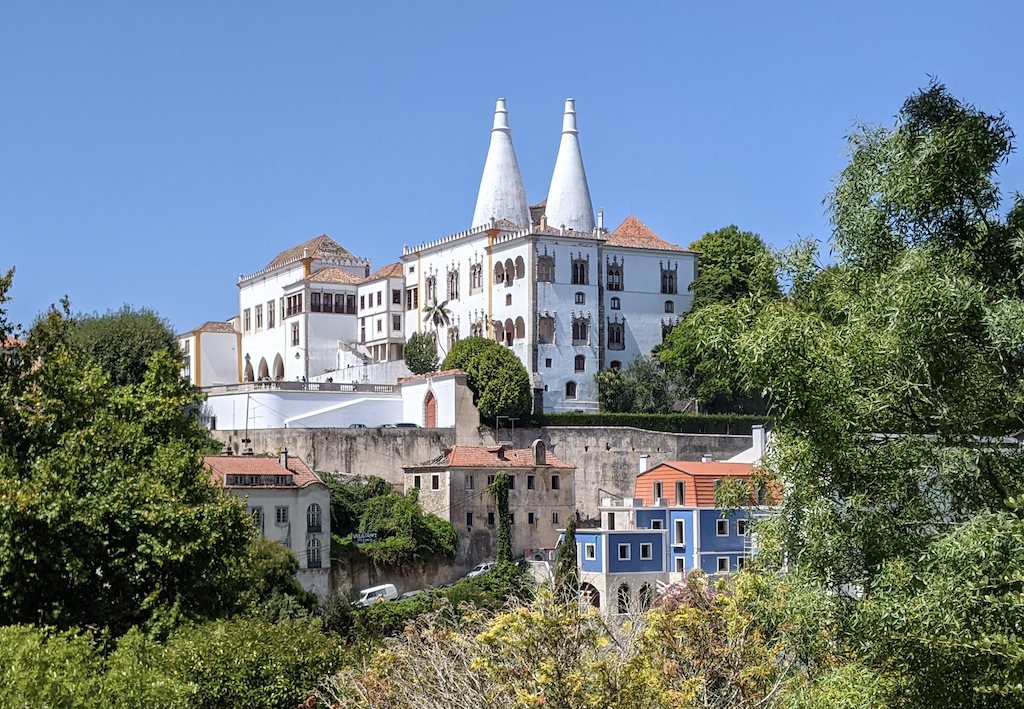
This was a daytime stop for us, so we only had time to visit one historical site. We settled on the National Palace of Pena perched on the top of the mountain overlooking Sintra. It promised an expansive view in a setting surrounded by parklands. The problem though was the parklands. We could see parts of the palace from down on the streets of Sintra, but our navigation system said it was a 45 minute drive around the opposite side of the mountain. This route took us through some of the as-promised beautiful parklands, reminding me of the golden foothills of the California. The problem came when the GPS asked us to turn on to a dirt road blocked by an iron gate. This was clearly not the public conveyance to the top. We backtracked to see if there was another turn off we missed. Only the odd delivery truck drove by, otherwise this area was completely deserted. We continued to drive around the mountain, but our efforts were in vain; we couldn’t find the road to the palace. This was the kind of loss born of the days of paper maps, not GPS and high resolution satellite images. Maybe we had spent too long at sea and forgotten how to properly navigate by car. After further research, we learned that access to the palace was by bus only, no private cars. Disappointed, we found the main highway and continued north.
Two hours into our drive, we found our home for the night at the town of Coimbra, nestled in a sharp bend of the Mondego River as it snakes its way to the sea. Like Lisbon and Sintra, you need good climbing legs to properly take in the sites. Coimbra was once the capital of Portugal and now is home to the Universidade de Coimbra. Founded in 1290, it is one of the oldest universities in the world. It started in Lisbon, and was moved to Coimbra and back to Lisbon twice until settling finally in Coimbra in 1537. This was not a bad compromise in my mind given the fact that Lisbon stole the capital from Coimbra in the 13th century.



The tug of war with Lisbon continues to this day, as the popularity of fado music attracts visitors to Coimbra’s intimate little nighttime cafes. Fado is a genre of music marked by mournful tunes interspersed with sentimental ballads of love, loss, and longing. Though we understood no words, the body language and intonation were universal. The whole setting had a speak-easy type of feel to it. Lisbon is often credited with the origin of Fado, but others claim it originated with Brazilian university students or Provence troubadours. Regardless, after an evening of Fado and a local brew, you will easily be transported to a time and a culture far from your own.

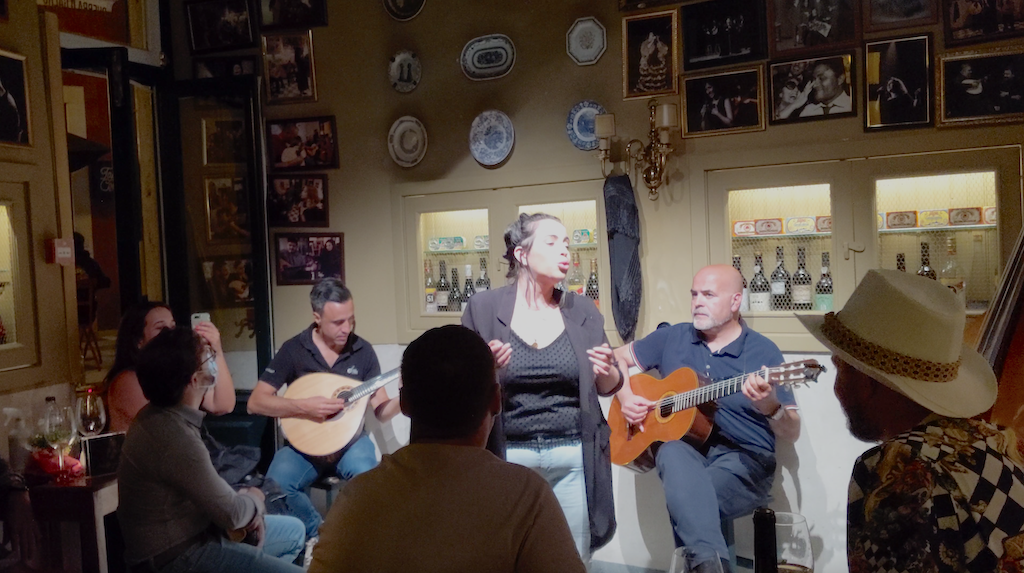
After months onboard a boat, there’s nothing like your first night back in a real bed followed by a long hot shower in the morning. Our little hotel in Coimbra also included a complimentary breakfast full of fresh fruit, yogurt and warm goodies, a nearly standard feature when traveling in Europe, but only an occasional perk in the U.S., and a poorly executed one at that, as judged by this breakfast connoisseur!
We continued our push north and within an hour found ourselves in the fertile Douro Valley. This region is abundantly green with agricultural pursuits at every twist in the narrow country roads. Vineyards predominate here, feeding the thirsty port houses 50km downstream at the city of Porto and Vila Nova de Gaia, right at the doorstep of the Atlantic. Small sailing craft, called rabelos, would use the tides, the river current and the wind to move barrels of wine down the river in about 3-4 days. The arduous trip back up river could take up to 30 days. The river is dammed now, but still, river cruises are a popular way to cover the Douro Valley. We had the modern luxury of a petrol car, and when the road swung close to the river, we reveled in seeing port and starboard channel navigation markers this far inland.

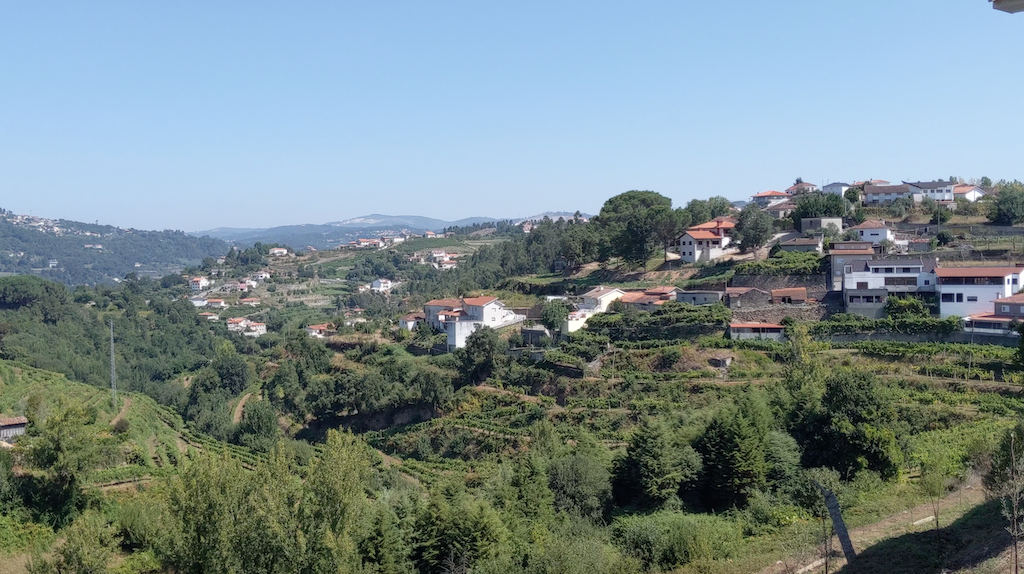
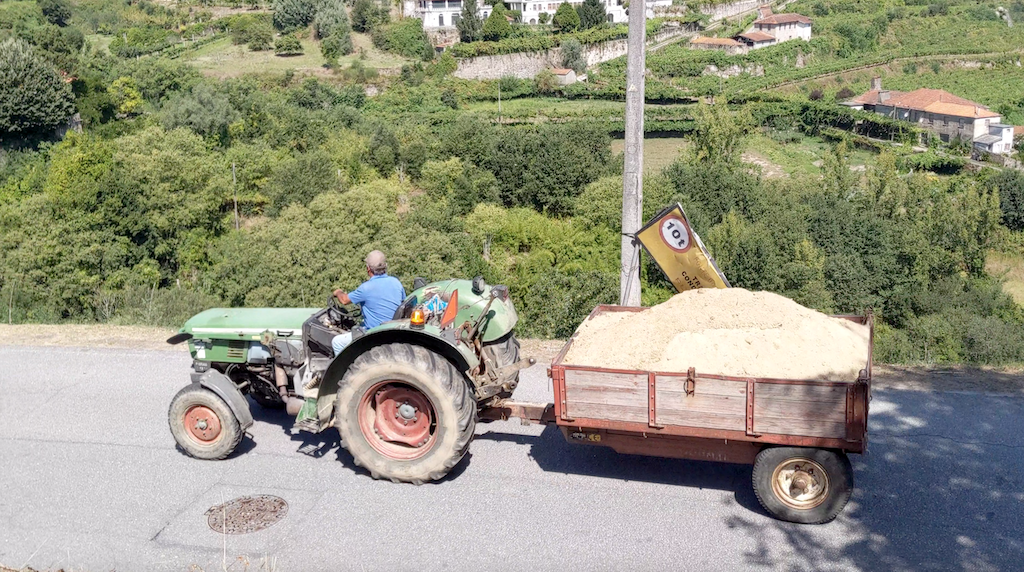
We would make our way with Sea Rose to Porto soon enough, so we stuck to sightseeing along the Douro Valley. Our last requirement before turning back was a simple need for lunch. We chose the slow local road that wound right along the northern shore of the river. Small villages would appear and be gone before we could ID an option for dining. An appealingly casual beach resort, full of colorful umbrellas and swimmers, caught our eye, but it was across the river and out of reach. Finally, we found a small rather boxy and unattractive building but with a deck overlooking one of the dams of the river. All the outdoor seating was taken, and the inside was full but for one table. The waitress kept promising to bring us menus as she hurriedly ran dirty dishes past us into the kitchen, but after twenty minutes and no closer to being served we stood up and left. I hate doing this. I was appalled when I saw this practice regularly carried out at other restaurants in our European travels. Diners would sit down, be presented with menus and specials and glasses of water, and after chatting for awhile, suddenly get up and leave. Couldn’t they have looked at the menu options before they took the time from the wait staff to make and clear a table? At least this time, we had the lack of a menu as an excuse to make our exit.
Further down the road, and with the big city of Porto looming, our stomaches were growling with disappointment. In one last attempt, we turned off the road and headed away from the river following signs to a local village. Down a nondescript alley, we spotted a small awning and a few tables setup out front. We had no idea what food they served, but felt like bugs hopelessly, blindly flying into the light. By this time, it was nearing the end of the lunch window and bumping up against siesta. The tables outside were all unbussed, and as we stood there dazed and in need of nourishment, an older man – not clear if he was the proprietor or a patron – waved us inside. Thick stone walls surrounded us, as we were led back to the main dining area crammed full of tables in the diminutive space of a modest living room. Locals were finishing up their lunches and stopping to look us up and down without being too obvious. A chalkboard of unrecognizable items seemed to represent our options, but after we got shuffled between wait staff and ended up with a young woman speaking reasonably good English, we learned there were only three – chicken, pork or codfish. We went for the codfish even though, from clandestine examination of other lunch plates whizzing by us, it appeared we would be digging out fish bones. Still, when in Portugal, if fish is on the menu, it’s wise to accept the invitation. Soon, we were given heaps of bread and a half-liter of wine to wash it down, apparently complimentary as part of the lunch special. Our young waitress seemed friendly and approachable, but I noticed that Mom, working the kitchen and visible through a break in the door, held a captive eye on us each time we stopped her daughter to ask a question. She seemed even more concerned once we received our fish, appearing to be genuinely worried that we might not like our meal. To the contrary, it was a delight for all senses, as much to enjoy the fresh codfish as it was to steal a glimpse into the lives and laughter of local Portuguese at a restaurant off the beaten path. These crossroads of background and culture, where boundaries of comfort and predictability are challenged, is where the treasure trove of travel resides. In just a few days, we had managed a productive peak behind the curtain that is the interior of Portugal, and our lives were that much richer for the effort. It was time to turn south and saddle back up onboard Sea Rose.

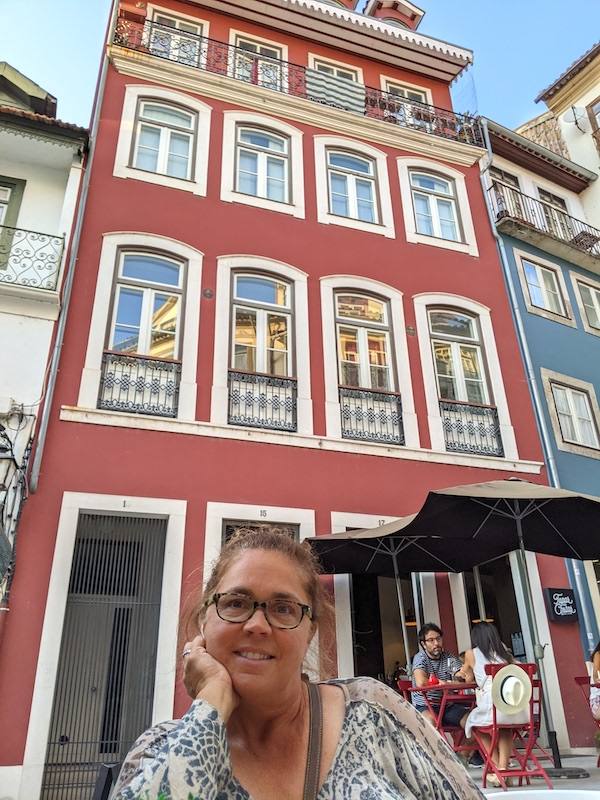
I’m hungry for some of that codfish!
Me too, especially after being home and away from it for several months! Take care.